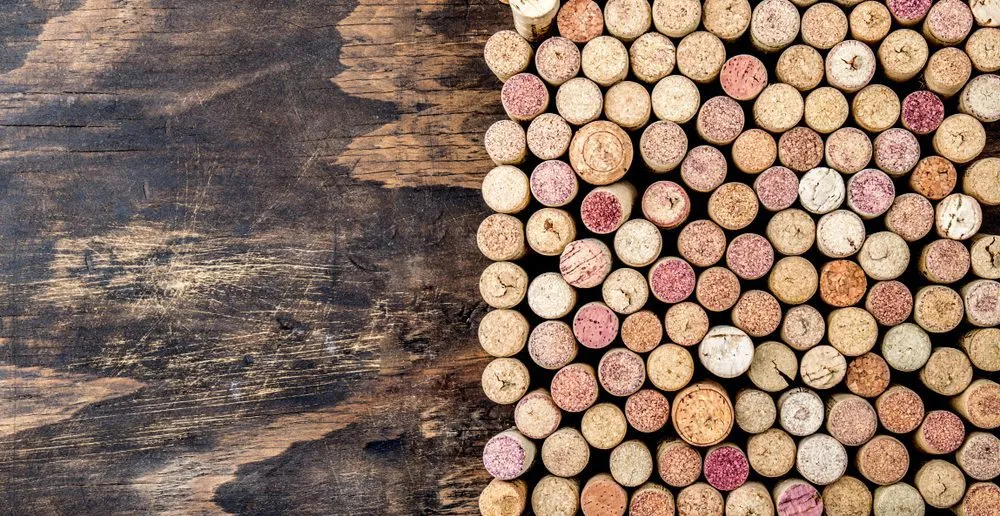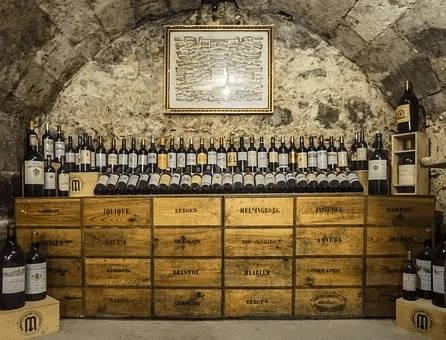Tasting Slovenian wines for the first time, while being unfamiliar with our local wine producers and varieties, you may feel slightly unprepared to dive into the vast selection this country has to offer. To give you a heads up before you do, let’s have a look at some typical Slovenian wines.
1. Sauvignon
Sauvignon is one of the most widespread and internationally diverse varieties. It’s so popular in Slovenia that we even hold an annual festival each May to celebrate it. As in any country Sauvignons produced in Slovenia have their own distinct characteristics, resulting in a unique taste and flavour palette, which separate them from all other wines of the sort. There are a number of wine producers across the country offering Sauvignon as a part of their portfolios. Each of them is slightly different according to the specific winemaking region. Normally though this is a dry white wine that pairs flawlessly with fish.
2. Chardonnay
The same can be said for Chardonnay. The taste varies from region to region resulting in an unimaginably diverse palette, even inside a small area such as Slovenia. This is chiefly due to the variations in micro-climate, which affect everything from vine growth and grape development to the fermentation process and maturing of the wine. For instance, tasting a Chardonnay from the coastal Primorska region is never quite the same as tasting the one form Štajerska, since the latter is more inland and has a slightly cooler climate. Even globally Chardonnays differ so much from one another, that the only thing they have in common is a smoky undertone in their flavour. This makes them inherently difficult to distinguish in a blind tasting.
3. Riesling
Also known as the king of wines and a variety of many flavours. Riesling is an absolute must on our list. It varies from sweet to dry depending on how long the winegrower has allowed it to ferment. It is known for its fruity aroma and compatibility with a wide range of dishes. As opposed to the more common German varieties, Slovenian Rieslings tend to have a more citrusy flavour with some peach notes. When aged, Rieslings are prone to develop additional smokey and honey or sometimes petrol undertones.
4. Jazbec Sparkling Teran
This one is somewhat rare to come across but definitely worth the effort of finding as it is a very special sparkling wine with the most exquisite taste. What’s unusual about it is that, contrary to most sparkling wines, it is actually made from red wine. The terroir comprised of hot Mediterranean sun and a scarcity of rain gives this wine its distinct character. The winegrowers produce this wine by the classical method. This means the second fermentation takes place in the bottles. They later leave these bottles to mature in natural Karst caves for several years. Naturally, this is a dry wine with medium alcohol content.
5. Zelen
A native Slovenian variety from the picturesque Vipava valley, the beauty of which is reflected in the special palette and enchanting aftertaste of this wine. Zelen has a gentle fruity and floral aroma resembling Mediterranean herbs such as lavender and rosemary. It has a full body and an excellent balance of sweetness and acidity, leaving a lasting rich and harmonious aftertaste. During production, they put the wine through a brief maceration and leave it to partially ferment in wooden barrels (fr. barrique). By doing so they give it a nice and rounded flavour.
6. Rebula
A wine which originated in Italy and can be very diverse. You are able to recognize the Slovenian version for having a crisp mineral taste resembling almonds, with slightly pronounced acidity and a fresh fruity or vanilla-like aroma. It’s usually a dry wine with slightly higher alcohol content and overall liveliness of the flavour. The colour should be straw yellow with a greenish hue. They mostly produce Rebula in the Primorska region, more specifically in the Goriška Brda area, giving this wine a true Mediterranean touch.
7. Teran
It’s one of the most talked about local wines due to a dispute over its national origin. That aside it is definitely native to the Karst region with its unique terroir. Due to the red soil, this wine has a magnificent structure, corpulent body and an unmistakable fiery red colour. It’s produced from the very old Refosco grape variety known for its dark skin. You should consume it young and should not age it as that would result in a very different tasting Teranton. Teran has an aroma which resembles wild berries. It contains a lot of lactic acid, iron and antioxidants making it one of the healthiest wines in the world. It’s health benefits have been known for centuries and have lately also been the subject of scientific research.
8. Black Velvet
Though usually used for blends this is a very special wine available pure in exclusive annual series of only a hundred 250 ml bottles. These contain Black Velvet produced from the world’s oldest surviving vine. This vine is located in Slovenia’s second largest city Maribor, which makes it all the more special. Noted designer Oskar Kogoj designed the bottles and you’ll be very lucky to get your hands on one of them. The locals call Black Velvet “Žametna črnina”. It has a brilliant bright red colour and a distinct raspberry aroma. All that combined with a slightly higher acidity makes this wine perfect for blends. Winegrowers have traditionally used it to make a number of precious Slovenian wines, lending them Black Velvet’s characteristic flavour. Slovenians appreciate this wine so much we even have an anthem for it.
9. Predicate Wines
There are a number of wine producers in Slovenia who are specialized in the production of predicate wines and wines of special quality. These are usually sweet late harvest white wines of different varieties, such as Traminer, Yellow Muscat, Riesling and Sauvignon. Though each has its characteristic taste and aroma, they all go very well along with sweeter foods such as cakes and other desserts. This is why we sometimes colloquially call them dessert wines. The best and the sweetest of these wines can be found in the inland Podravje and the Posavaje regions of Slovenia.
10. Puro
Due to its unusually long ageing, this is sparkling wine like no other. You can store it upside down almost indefinitely as it contains yeasts which can keep it alive for years. The yeasts also produce some sulphur, however, no additional sulphur is added in the process. The wine has a medium orange-red colour and an aroma resembling red fruits with a touch of herbal notes. The latter being a result of maturing in fresh wood. Though it is well matured and has prominent tertiary notes, the winegrowers are able to preserve a lot of its original freshness in the process. This makes for a very complex, dry and homogeneous palate irresistible to anyone who loves sparkling wine.
This concludes our list of 10 Slovenian wines you have to try. As you can see they are incredibly diverse and we only just named a few.











